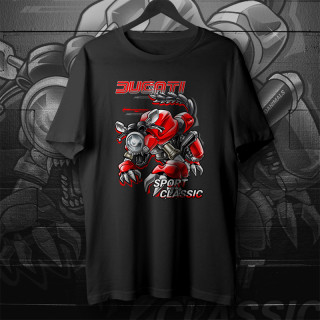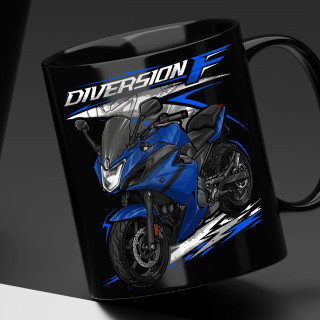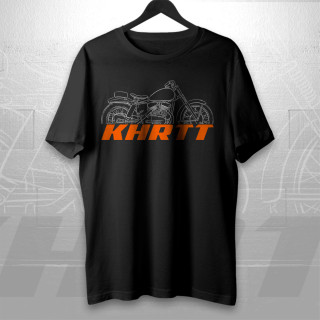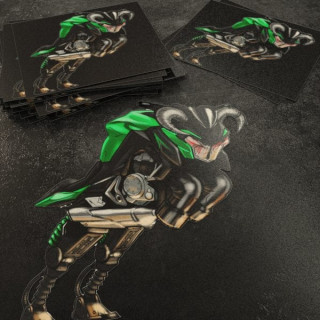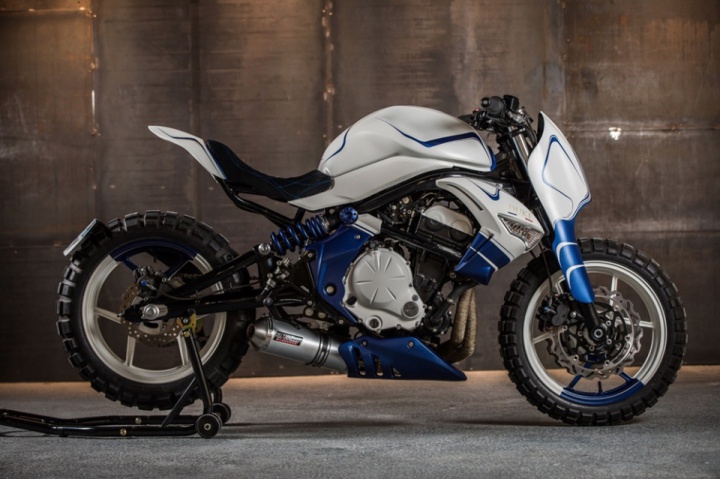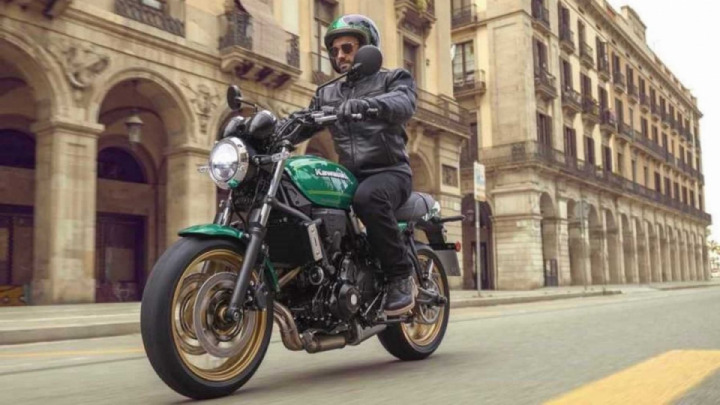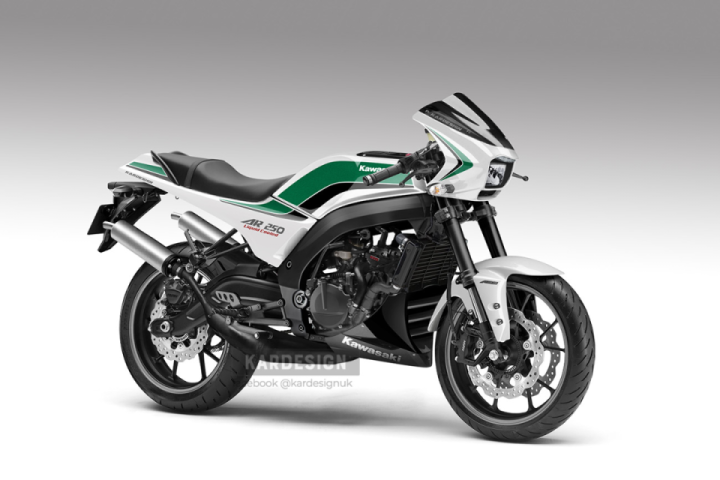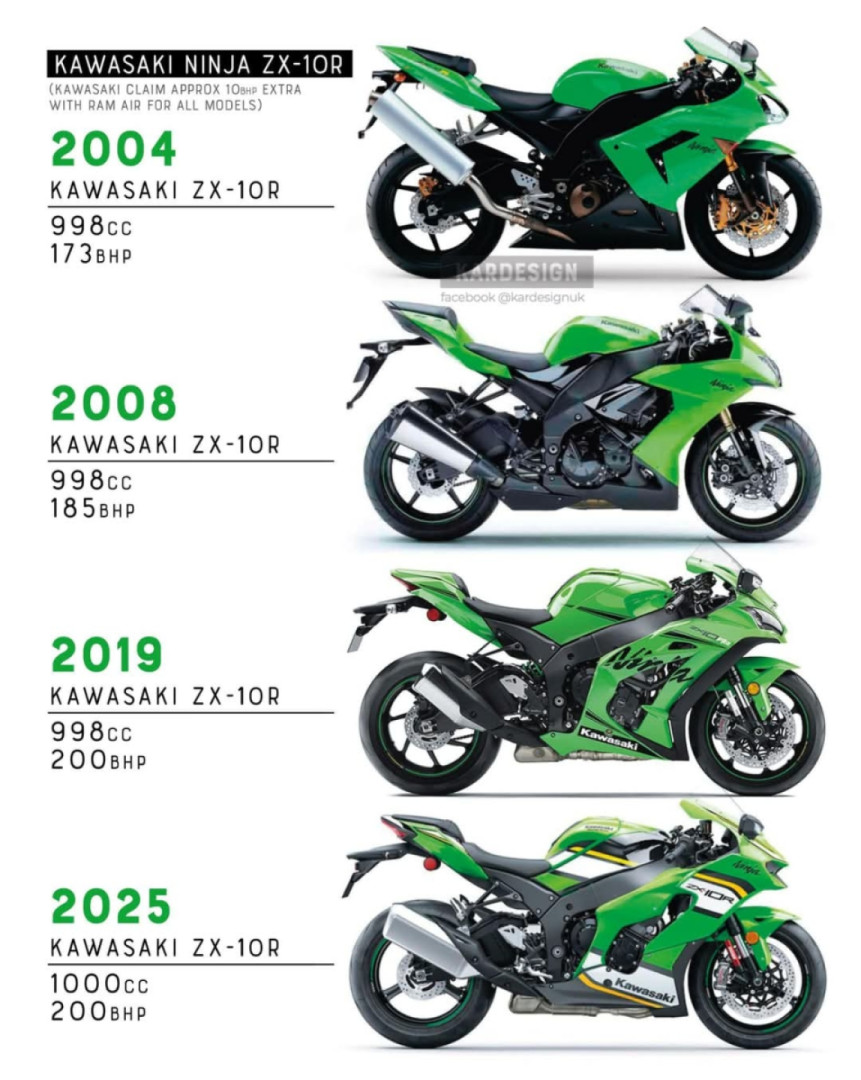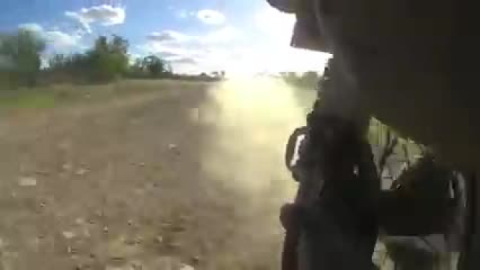
Kawasaki 1400GTR by SI MANTAS MOTORCYCLES
They say that imitation is the greatest form of flattery. By now, with all the copycat builds it has inspired, the designers of the Lotus Motorcycles C-01 are probably all vain. And rightly so. When it was unveiled the C-01 was so unique it rocked the motorcycling world. The 200hp beast was clad in all-encompassing carbon bodywork that gave it a look unlike anything else on the market and its association with the Lotus brand certainly didn’t go unnoticed either.

One builder whose interest in the C-01 went beyond simple admiration was Mantas Simanauskas of Si Mantas Motorcycles in Lithuania. Mantas had been dreaming about a C-01 inspired build since first laying eyes on the bike so when an opportunity finally presented itself he snapped it up.
At the heart of the Lotus C-01 was the same v-twin found in the KTM RC8R. The frame was a custom mix of carbon fibre, steel and titanium and just about all of the bike’s components were top of the line. All up the bike weighed a mere 398 pounds (181kg) which was attributed to the ample use of carbon fibre and resulted in a very impressive power to weight ratio. Lotus Motorcycles produced 100 versions of the C-01 and they retailed for $137,000 USD each.
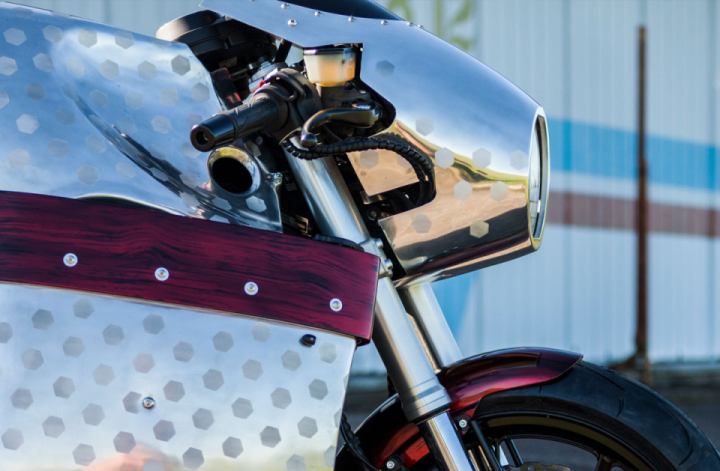
For his C-01 inspired project, Mantas wasn’t planning on building an entire bike from scratch or spending six figures to realise it. Instead, he had to source a suitable donor. “I wanted the base to be a powerful motorcycle. I selected a 2010 year model Kawasaki 1400 GTR,” he says.
The inline-four of the Kawasaki 1400 GTR isn’t quite as powerful as the C-01’s 200 hp v-twin. But with 153 hp on tap, it’s no slouch. The 1400 GTR is an enormous sport-tourer. It came standard with full fairings, hard case panniers and a huge two-up saddle. The 2010 1400 GTR was also covered in the latest tech like an electronically adjustable windscreen, ABS and traction control. Roll all this together and you end up with a motorcycle that’s a whopping 120kg more than the Lotus. So if he was to create a C-01 homage with comparable performance, Mantas had his work cut out for him.
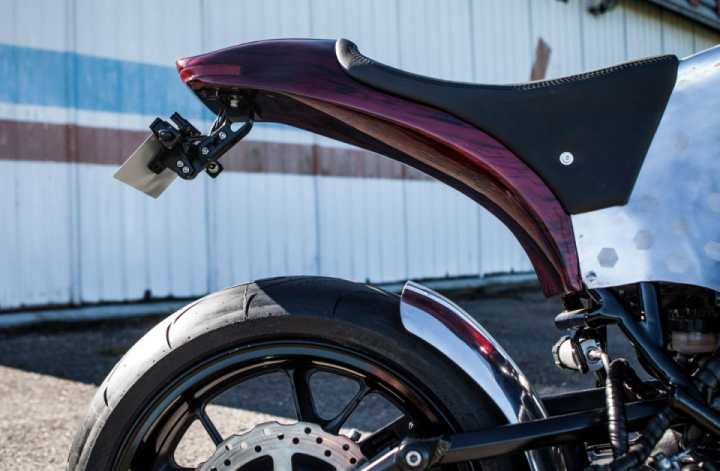
Although the bodywork of the Lotus C-01 is primarily carbon fibre Mantas opted to build his from aluminium. It may not be quite as lightweight as carbon fibre, but aluminium still offers a lot in the way of weight saving and can be massaged into almost any shape imaginable. Mantas also decided to integrate wood into his design to add to the bike’s retro-futuristic vibe.
Once he was happy with his concept Mantas tore down the Kawasaki, which is when some issues with his chosen donor became glaringly apparent.
“After undressing the motorcycle, it appeared that its frame was not very modification-friendly,” he recalls. “It was also hard to create perfectly matching aluminium panels since the original frame of the GTR is not symmetrical.” To top it all off the transversally mounted inline-four of the 1400 GTR is a monolith of an engine and it all had to be housed behind the new bodywork which, as you can imagine, proved to be a challenge.
To tackle the issues with the frame Mantas had to build several key components from scratch. These included the fuel cell.
“A new aluminium gas tank was made, while still leaving all OEM systems and adding an extra gas tank breather from a BMW R1200,” he says. “The gas tank itself is barely visible. It is covered by the aluminium side panels and a wood panel which extends from the dashboard to the back of the motorcycle.”
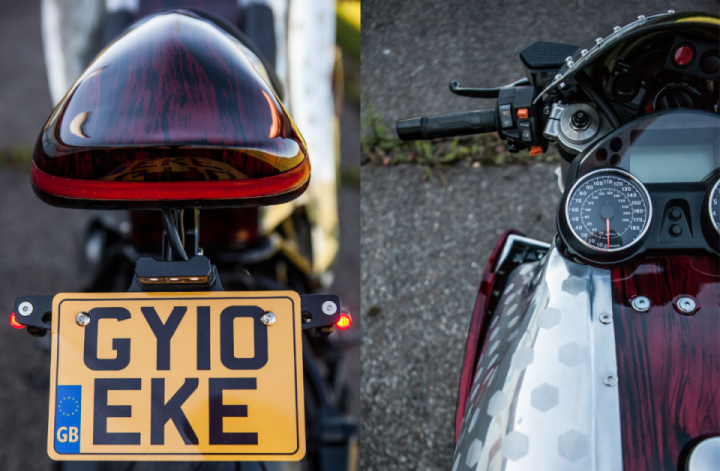
The bespoke alloy bodywork completely encases the GTR chassis and engine. Mantas also created a custom headlight cowl, belly pan and trimmed down fenders to complete the look.
The wooden components of the bike are not what they seem. Mantas built them by either using wood laminate, like that used to form skateboards or more aluminium. After the desired shape was achieved he finished the visible surfaces using realistic wood grain aerography paint and a thick layer of glassy varnish. As for the aluminium panels they’ve all been left raw. After polishing them to a mirror shine Mantas hand brushed each hexagon shape to create a unique appearance.
When finishing the rear of the motorcycle Mantas kept things clean by running the wires through the tail unit. He also opted for Highsider Proton 2-in-1 turn signal/brake lights which sit discreetly at either side of the license plate. There’s an LED brake light integrated into the tail unit too which functions like an F1 cars brake light.
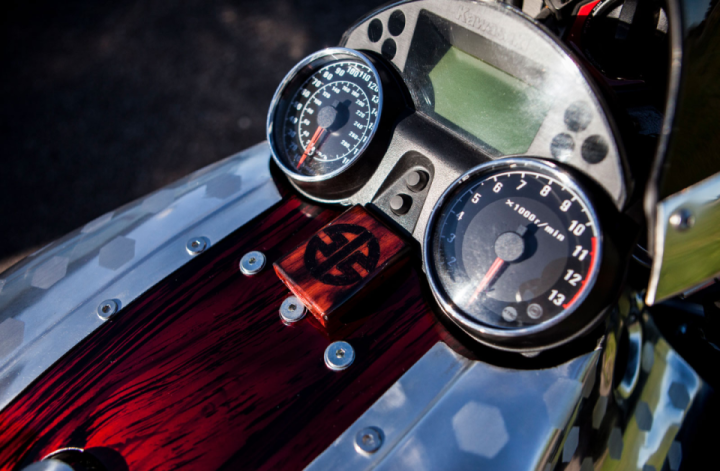
Headlight duties are covered by a classic glass headlamp with an ‘angel eye’ DRL upgrade. Another set of tiny Highsider turn signals hang off the side panels. The dash is the original 1400 GTR item which is mounted to the tank rather than the top clamp. A pair of clip-on handlebars flank the dash and they wear the original GTR controls.
Performance tweaks here are minimal. Mantas has limited them to the adaption of a small aftermarket muffler, a Lust Racing lowering kit and Contisport Attack rubber. The biggest improvement however is sure to come from the overall reduction in weight now that the bike has been stripped of all its touring equipment.
All up this Kawasaki 1400 GTR transformation took around 2 years to complete and while the finished bike may not be everyone’s cup of tea, the sheer effort gone into it is admirable. Mantas reports that the bike now rides more like a superbike than a tourer and we have no doubt it’ll turn a lot more heads too.
Credit: Return of the caferacers

#Kawasaki #Custom #Moto #1400GTR #Bike




